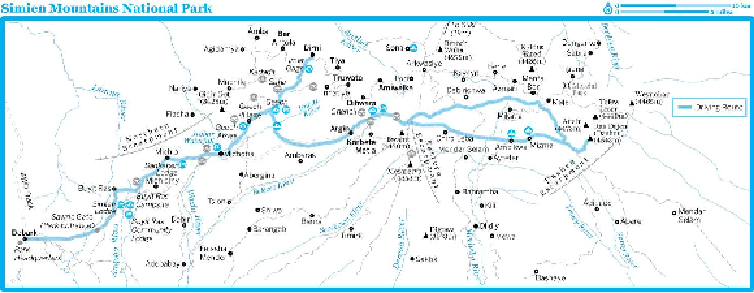Travel Reference
In-Depth Information
Thanks to the combination of scenery and wildlife, the park is a World Heritage Site.
However, it's long been on the World Heritage in Danger list due to the large number of
people living in the park and the local authorities' lack of serious action on the problem.
Despite this, as one of Africa's most beautiful ranges, the Simiens aren't to be missed.
Geography & Geology
Comprising one of Africa's principal mountain massifs, a number of peaks rise above
4000m, including Ethiopia's highest, 4543m-tall Ras Dashen. (It's actually Ras Dejen,
though to avoid confusion we use the common-but- incorrect name.) It's touted by
Ethiopian tourism officials as the fourth-highest mountain in Africa; it's actually the 10th.
The Simiens' landscape is incredibly dramatic. It was formed by countless eruptions,
some 40 million years ago; layer upon layer of molten lava piled up. The subsequent
erosion produced the mountains' jagged and spectacular landscapes. The famous pin-
nacles that sharply and abruptly rise from the surrounding landscape are volcanic necks,
the solidified plumbing of the ancient volcanoes.
Ecology
The park extends from 1600m to 4543m in elevation and much of its 412 sq km lies with-
in the 'Afro-alpine' zone, above 3200m, but there's also heath forest and high montane
landscapes.
The highlands are home to three of Ethiopia's larger endemic mammals: the walia ibex
(population estimated around 1100), the gelada monkey (5000) and the elusive Ethiopian
wolf (100). While wolves are rarely encountered (Chenek offers the best chance) you're
nearly guaranteed to meet hundreds-strong troops of gelada monkeys (those near

